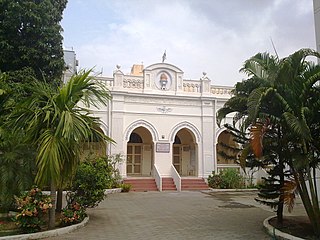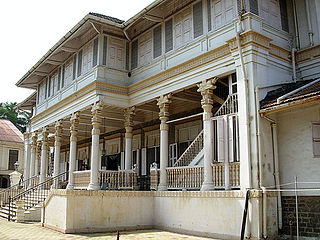
Parsis or Parsees are an ethnoreligious group of the Indian subcontinent adhering to Zoroastrianism. They are descended from Persians who migrated to Medieval India during and after the Arab conquest of the Persian Empire in order to preserve their Zoroastrian identity. Encouraged by Zoroastrian priesthood Christian persecution, double taxation and killings were evident throughout the Sassanian Empire, meaning that the Christians were relieved by the change in rule, but for this reason the Zoroastrians left for the Indian Subcontinent once the Rashiduns arrived. The Parsi people comprise the older of the Indian subcontinent's two Zoroastrian communities vis-à-vis the Iranis, whose ancestors migrated to British-ruled India from Qajar-era Iran. According to a 16th-century Parsi epic, Qissa-i Sanjan, Zoroastrian Persians continued to migrate to the Indian subcontinent from Greater Iran in between the 8th and 10th centuries, and ultimately settled in present-day Gujarat after being granted refuge by a local Hindu king, Jadi Rana.
Public Holidays in India, also known as Statutory Holidays, or colloquially Government Holidays, consist of a variety of cultural, nationalistic, and religious holidays that are legislated in India at the union or state levels. While many of these holidays are honored and acknowledged nationwide, state legislation varies regarding which are officially recognized.

Sanjan is an ancient city on the southern edge of the Kara-kum Desert, in the vicinity of the historically eminent oasis-city of Merv. Topographically, Sanjan is located in the Greater Khorasan region of Central Asia. Politically, Sanjan is in the present-day Mary Province of Turkmenistan.

Jadi Rana was an Indian ruler of Sanjan, Valsad in present-day Gujarat as per the Qissa-i Sanjan, an epic poem completed in 1599, which is an account of the flight of some of the Zoroastrians who were subject to religious persecution following the fall of the Sassanid Empire, and of their early years in India, where they found refuge. A 20th-century translation of the Qissa transliterates the name as Jádi Rana.

A fire temple, Agiary, Atashkadeh, Atashgah (آتشگاه) or Dar-e Mehr is the place of worship for the followers of Zoroastrianism, the ancient religion of Iran (Persia). In the Zoroastrian religion, fire, together with clean water, are agents of ritual purity. Clean, white "ash for the purification ceremonies [is] regarded as the basis of ritual life", which "are essentially the rites proper to the tending of a domestic fire, for the temple [fire] is that of the hearth fire raised to a new solemnity". For, one "who sacrifices unto fire with fuel in his hand ..., is given happiness".
Sanjan is a town situated in Umargam taluka in the Valsad district in the state of Gujarat, India. Sanjan is located around 70 km from the Valsad city. It is the earliest settlement of the Parsis in India.
The Bombay Quadrangular was an influential cricket tournament held in Bombay, British India between 1892–93 and 1945–46.

The Story of Sanjan is an account of the early years of Zoroastrian settlers on the Indian subcontinent that was originally written in 1599 CE by Parsi priest, Bahman Kaikobad. In the absence of alternatives, the text is generally accepted to be the only narrative of the events described therein, and many members of the Parsi community perceive the epic poem to be an accurate account of their ancestors.
Udvada is a town situated in Pardi taluka in the Valsad district in the state of Gujarat, India. Udvada is a coastal town located around 24 km from the Valsad city. The Zoroastrian temple, Udvada Atash Behram is situated here.

The persecution of Zoroastrians has been recorded throughout the history of Zoroastrianism, an Iranian religion. The notably large-scale persecution of Zoroastrians began after the rise of Islam in the 7th century CE; both during and after the conquest of Persia by Arab Muslims, discrimination and harassment against Zoroastrians took place in the form of forced conversions and sparse violence. Muslims who arrived in the region after its annexation by the Rashidun Caliphate are recorded to have destroyed Zoroastrian temples, and Zoroastrians living in areas that had fallen under Muslim control were required to pay a tax known as jizya.

Zoroastrianism has numerous festivals and holy days, all of which are bound to the Zoroastrian calendar. The Shahenshahi and Kadmi variants of the calendar do not intercalate leap years and hence the day of the Gregorian calendar year on which these days are celebrated shifts ahead with time. The third variant of the Zoroastrian calendar, known as either Fasli or Bastani, intercalates according to Gregorian calendar rules and thus remains synchronous with the seasons. For details on the differences, see Zoroastrian calendar.
Variav is a village in Surat District, Gujarat, India. Variav is on the right bank of Tapti River. Variav was recently added to the region of Surat Municipal Corporation, and is now a suburb of Greater Surat.
Saal is an Indo-Persian word meaning year, and mubarak is an originally Arabic term meaning blessing or good wishes. The greeting Saal Mubarak is therefore used to mark the New Year.
Dr. Sir Ervad Jivanji Jamshedji Modi (1854–1933), who also carried the title of Shams-ul-Ulama, was a prominent Zoroastrian Parsi-Indian priest, scholar and community leader in Bombay. One of "the most decorated priests in history", he wrote over 70 books, produced over 120 scholarly papers on Zoroastrian history, traveled and researched into Zoroastrian affairs extensively and was instrumental in organizing the Parsi community in India. During his lifetime he had been called "the greatest living authority on the ancient history and customs of the Parsis."
Bahrot Caves, locally known as Barad, near Dahanu, Maharashtra are the only Parsi/Zoroastrian Cave temple in India. Bahrot Caves is located 25 km south of Sanjan, Gujarat and are situated at a small distance of 8 km away from the village of Bordi also nearly 9 km from NH48 from Talasari.

Zoroastrianism in India has significant history within the country. Zoroastrians have lived in the Indian subcontinent since the Sasanian period. The Zoroastrians also moved to India in successive migrations during the Islamic period. The initial migration following the Muslim conquest of Persia has been canonized as a religious persecution by invading Muslims. Zoroastrianism meanwhile suffered a decline in Iran after the conquests. Subsequent migrations also took place after the attempts by Safavids to convert their subjects to Shiism.

Jal Phiroj Clubwala Dar E Meher, popularly known as the Royapuram fire temple, is a Zoroastrian fire temple at Royapuram, Chennai, India. It was built in 1910 and donated to the Madras Parsi Zarthosti Anjuman by philanthropist Phiroj M. Clubwala. The temple is one of the 177 odd fire temples in the world, of which some 150 are in India. It is the only Parsi fire temple in Tamil Nadu and surrounding region, including Puducherry and Kerala. The flame in the temple is burning continuously ever since the temple was built and is stoked five times a day by the priest.

The Iranshah Atash Behram, also known as the Udwada Atash Behram is a sacred fire housed in a temple in Udvada, Gujarat on the west coast of India. It is the first of the eight fire temples of the Zoroastrian religion in the country. The Atash Bahram, meaning "Victorious Fire", is the oldest fire temple in India, dated to the eighth century, and represents the historical cultural and religious links with Iran. The current temple housing the sacred fire was built in 1742 by Motlibai Wadia from Bombay. The temple structure, built spaciously, is well decorated and contains the Dasturji Kaiyoji Mirza hall and a museum. The main hall of the temple is accessed through a two-stage staircase. The temple attracts Zoroastrian pilgrims from all parts of India, Pakistan, and from around the world.

The Revayats are a series of exchanges between the Zoroastrian community in India and their co-religionists in early modern Iran. They have been ascribed the same importance of the Talmud to Judaism by Jivanji Jamshedji Modi.
Sanjan railway station is a railway station on the Western Railway in the state of Gujarat, India. Sanjan railway station is 49 km away from Valsad railway station. Passenger, MEMU and few Express trains halt at Sanjan railway station.








